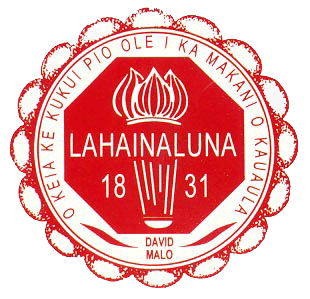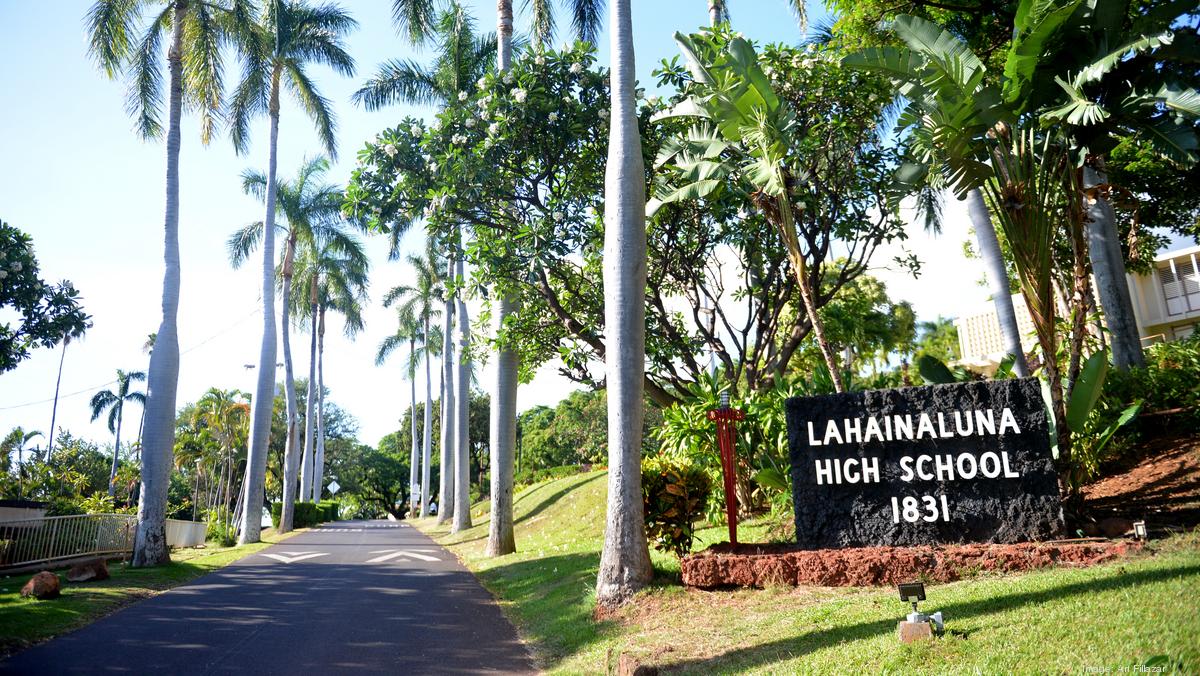Lahainaluna High School


What We Do
Mission Statement:
Lahainaluna will strive to provide all students with the knowledge and principles necessary to make them responsible citizens, appreciative of the arts, and aware of the diversity of our global environment.
As a school community, we pledge to challenge and to support all students and preserve the heritage that is Lahainaluna.
Colors: Red & White
Nickname: Lunas
Established: September 5, 1831
Nickname: Lunas
Established: September 5, 1831
Vision Statement:
Gather At This Place of Lahainaluna
Grasp the Flaming Torch of Excellence
And Let Us Move Forward Together
Grasp the Flaming Torch of Excellence
And Let Us Move Forward Together
Lahainaluna High School is located approximately 500′ in elevation above the town of Lahaina, on the island of Maui. Currently, the school has the following programs:
- Established career pathway learning communities on campus. These pathways include Arts & Communication; Business Management & Technology (Academy of Hospitality and Tourism); Health & Medical services; Industry, Engineering & Technology; Ninth grade teams; and Natural Resources.
- Intergrated “Po’okela”, a mentor program.
- Designed senior project curricula
- Implemented, in school year 2007-08, a Transitions class to allow students to meet the Board of Education’s graduation credit requirement for a personal transition plan.
- Implemented, in school year 2009-10, AVID class.
Philosophy of Lahainaluna High School:
Lahainaluna is a part of a society that is experiencing rapid change. Our school must provide students with the tools to cope that change. Our educational programs strive to be flexible and innovative, while retaining those programs which have proven effective in meeting our students’ needs.
We recognize the importance of each student. All students can learn, and we must give them the opportunity to maximize their potential. We encourage students to think independently, to have a sense of responsibility for themselves and for society, and to experience the satisfactions and rewards that come from creativity.
The ultimate goal of our school is to instill a sense of dignity and self-worth in each student. We strive to develop in each student knowledge and appreciation of democratic principles. Everyone deserves equal opportunity, and we seek to protect students’ rights.
Beliefs:
- We believe in excellence and equity in education.
- We believe students can learn in different ways and should be provided with a variety of instructional approaches to support their learning.
- We believe that the commitment to continuous improvement is imperative, to enable students to become confident, self directed lifelong learners.
- We believe standards with clear goals and high expectations for student achievement should guide curriculum strategies.
- We believe education is a system made up of all components of our community interacting as one.
Who We Are
Nestled at the base of Pu’u Pa’upa’u (Hill of Struggle), Lahainaluna Seminary was founded in 1831 by the American missionaries with the intent of creating a high school to educate the greater population. This was made possible with the tract of land gifted to Lahainaluna by Chiefess Kalakua Hoapiliwahine, wife of Governor Hoapili.
Under the care of the American Board of Missions, Lahainaluna Seminary opened its doors to twenty-five students, among them David Malo, age 38, who became part of a work/study program “to instruct young men of piety and promising talents”. The Reverend Lorrin Andrews was its first leader and principal. All subjects were taught in Hawaiian by the missionaries. David Malo, among the first to graduate, went on to become the first Superintendent of Schools, an entrepreneur, an advisor to to King Kamehameha III, and a minister.Then, in 1836, thirty-two boys, ages 10-20, were admitted as the first boarding students. They attended Lahainaluna Seminary in a work/study boarding program, one that still exists today. In addition to constructing their early classrooms and sleeping quarters, students studied a variety of courses including Geography, Mathematics, History, English, and Astrology along with Writing.
With the arrival of the fist printing press placed in Hale Pa’i, the teachers and students were able to print books, magazines, and newspaper to accompany their studies and to fulfill printing requests from the rest of the islands. The first newspaper west of the Rockies, Ka Lama (The Torch) was printed in Hale Pa’i on February 14, 1834.
In 1849, Lahainaluna Seminary went from a private mission seminary to a public institution of higher learning. English then became the venue of instruction. A year later, King Kamehameha III put the school under direct control of the Hawaiian Monarchy. By 1864, only Lahainaluna graduates were considered qualified to hold government positions such as lawyers, teachers, district magistrates, and other important posts.
In 1903, Lahainaluna became a Vocational Trade School; in 1923, a public technical high school, admitting both boys and girls as day students. The Boarding Program continued enrolling male students into its program; then in 1980, female students were admitted into the Boarding Program.
Always meeting the needs of the students in an island community, Lahainaluna High School evolved, chronologically, from a seminary boarding school for men in 1831, taught by the missionaries to assists in the education of the community, to a public technical high school, admitting both male and female students in 1923, to a comprehensive high school in 1961, and to a college, career, and citizenship ready school in 2013.
Cause Areas
Keiki, Education & Training, Community Engagement
Lahainaluna High School
Volunteer Opportunities
Lahainaluna High School – Wildfire Relief
When Lahaina town was ravaged by the wildfires on August 8, 2023, the community was held strong by the people…
